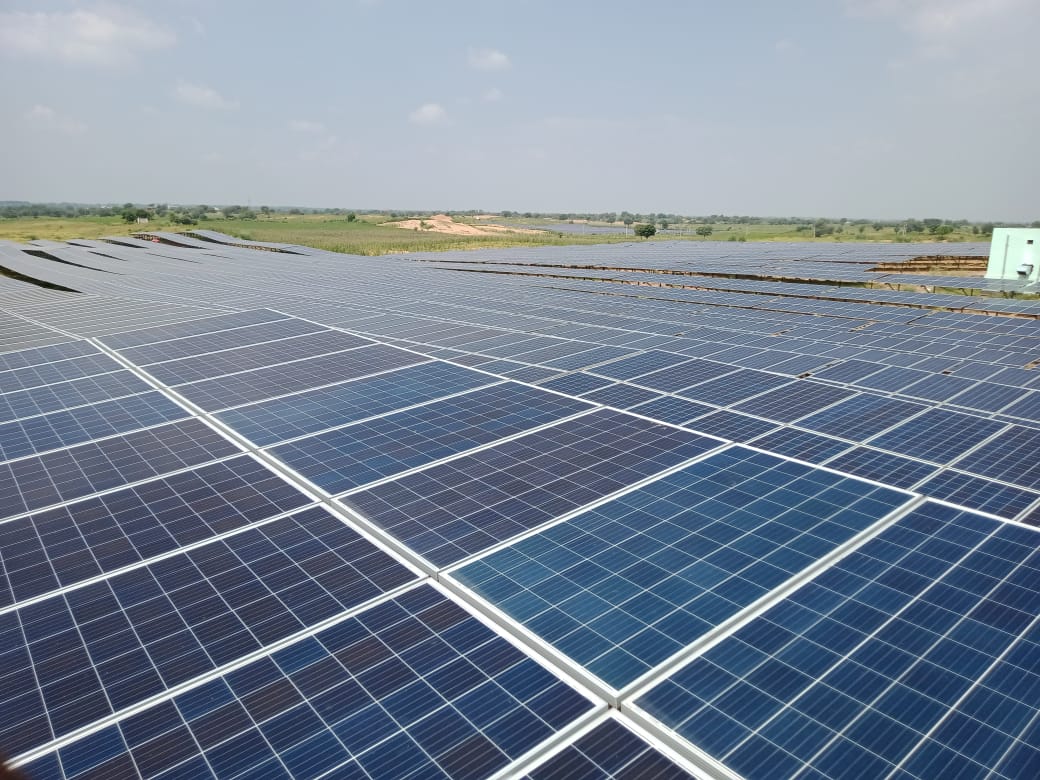The Ministry of New and Renewable (MNRE) Energy, after consultation with state governments, has decided to also include feeder-level solarization under the Prime Minister Kisan Urja Suraksha Evam Utthan Mahaabhiyan (KUSUM) rural solar scheme and issued detailed guidelines for its implementation.
The PM-Scheme, approved by the cabinet in February 2019, provides government funding of INR34,422 crore to install solar pumps and grid-connected renewable power plants.
The scheme is intended to create an avenue for extra income for the farmers as they can sell the excess energy generated from their PV capacity. At the same time, states can meet their RPO [renewable purchase obligation] targets from purchasing this electricity.
The government aims to add a renewable energy capacity of 25.75 GW by 2022 through the PM KUSUM scheme.
The Scheme consists of three components. Component-A includes installation of decentralized, ground-mounted, grid-connected renewable power plants. Component-B includes installation of standalone solar-powered agriculture pumps. Component-C includes solarization of grid-connected agriculture pumps with central and state subsidy of 30% each and farmer’s contribution of 40%.
Feeder-level solar plant installation has been included under Component C of the PM-KUSUM Scheme to provide daytime reliable solar power for irrigation. The Distribution Companies (DISCOMs) will be the implementing agency for feeder-level solarization in their respective areas.
The scheme aims to solarize dedicated feeders for agricultural loads (feeders that have already been separated to serve agricultural loads), though feeders having a major load for agriculture may also be considered.
Compared to setting up individual solar plants for pumps, which allows farmers to sell surplus solar power to DISCOMS, feeder-level solarization will incentivize the farmers for power consumption less than the benchmark, which serves as an important measure for the conservation of groundwater level. Such saving of power shall be treated as surplus power injected by farmers, and DISCOMs will pay them against this saved power at a pre-determined tariff.
Solarization of total 4 lakh grid-connected pumps is targeted for sanction by 2020-21 under Component C, 50% of which are to be solarized through feeder-level solarization and the balance 50% through individual pump solarization.
A feeder-level solar power plant may be installed to cater to the requirement of power for a single feeder or multiple agricultural feeders emanating from a distribution substation.
The state may choose to install a feeder-level solar power plant of capacity higher than the capacity required for supplying power to the agriculture feeder. The additional solar power generated may be provided for nearby rural/urban loads during day time or stored to supply power during evening hours for lighting/induction cooking and other household purposes.
Central financial assistance
The solar plant installation cost has been estimated as INR 3.5 crore/MW to calculate the central financial assistance (CFA). Any pump capacity can be solarized under the scheme, but the CFA will be limited to solar capacity for 7.5 HP pumps.
The feeder-level solar plants can be installed in either Capex payment model, under which systems are bought and owned by consumers, or RESCO mode, wherein systems are owned and installed by third-party investors.
For installation of feeder-level solar power plant under CAPEX Model, the central government will provide CFA of 30% (50% in case of North Eastern States, hilly states/union territories and island union territories). The balance can be met through loan from state-owned development funding institutions like the National Bank for Agriculture and Rural Development, Power Finance Corporation and Rural Electrification Corporation Limited.
For installation of feeder-level solar power plants through RESCO model, the developers will be selected based on the lowest tariff offered for supply of required solar power for 25 years. The developer will get CFA at 30% of the estimated cost of solar plant installation, i.e. INR 1.05 crore/MW (30% of INR 3.5 crore/MW).
This content is protected by copyright and may not be reused. If you want to cooperate with us and would like to reuse some of our content, please contact: editors@pv-magazine.com.









By submitting this form you agree to pv magazine using your data for the purposes of publishing your comment.
Your personal data will only be disclosed or otherwise transmitted to third parties for the purposes of spam filtering or if this is necessary for technical maintenance of the website. Any other transfer to third parties will not take place unless this is justified on the basis of applicable data protection regulations or if pv magazine is legally obliged to do so.
You may revoke this consent at any time with effect for the future, in which case your personal data will be deleted immediately. Otherwise, your data will be deleted if pv magazine has processed your request or the purpose of data storage is fulfilled.
Further information on data privacy can be found in our Data Protection Policy.